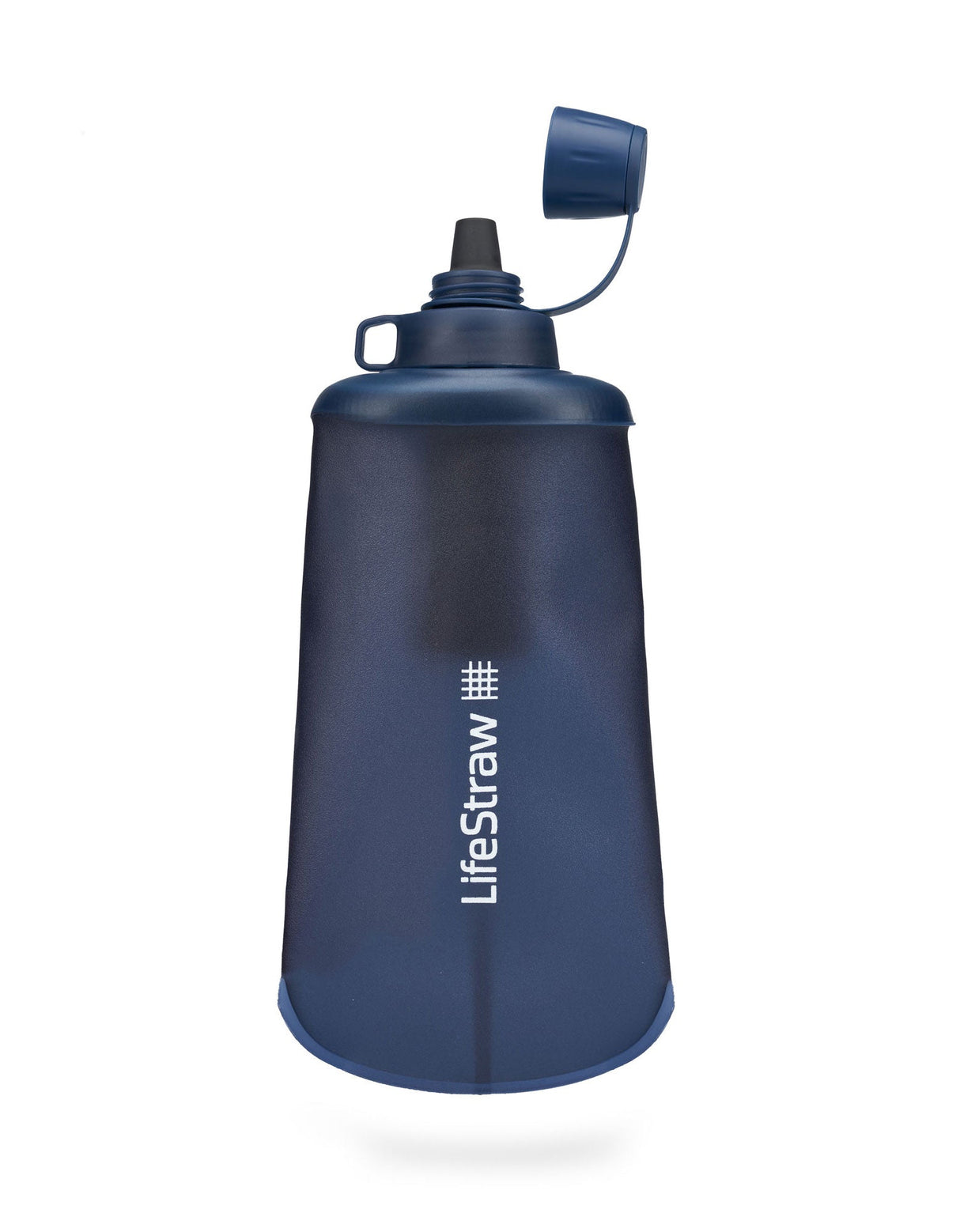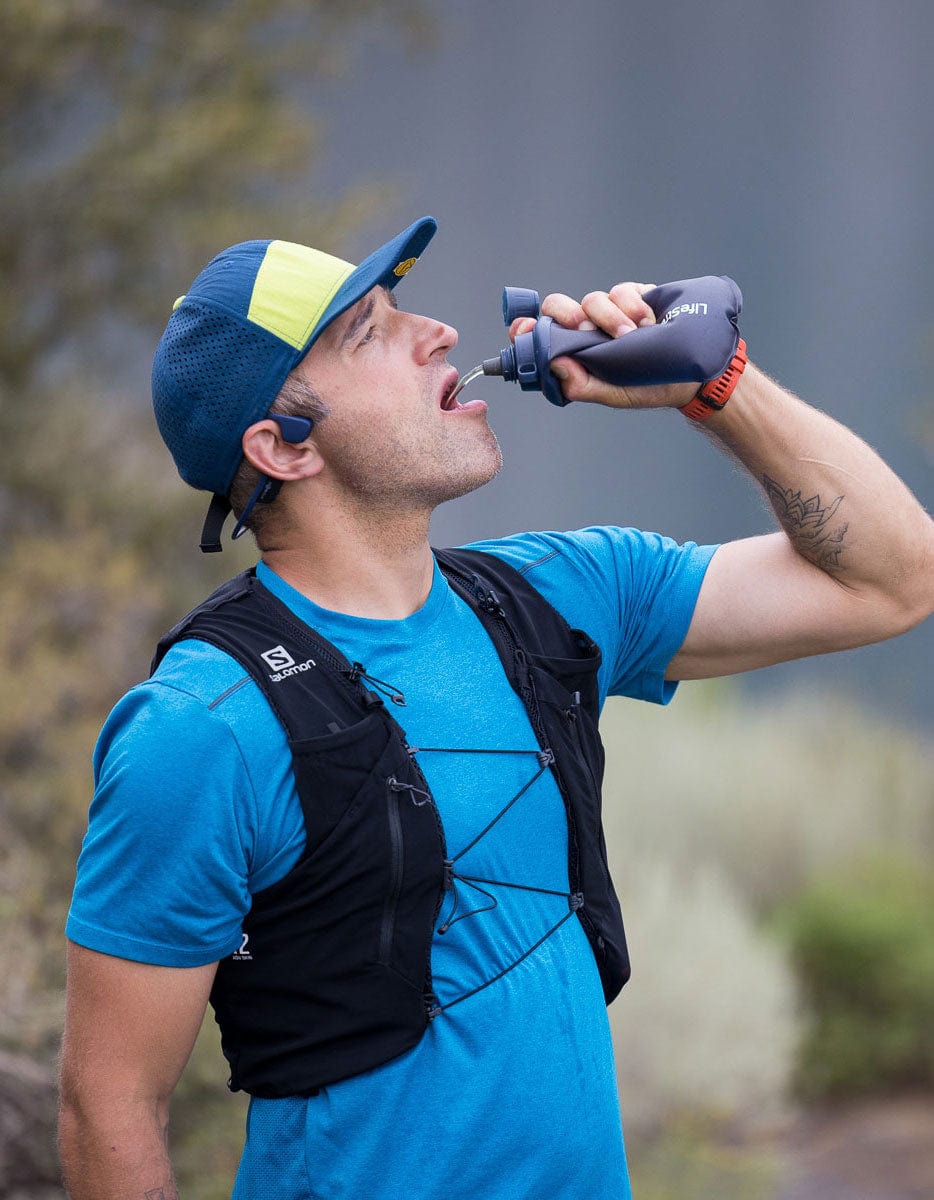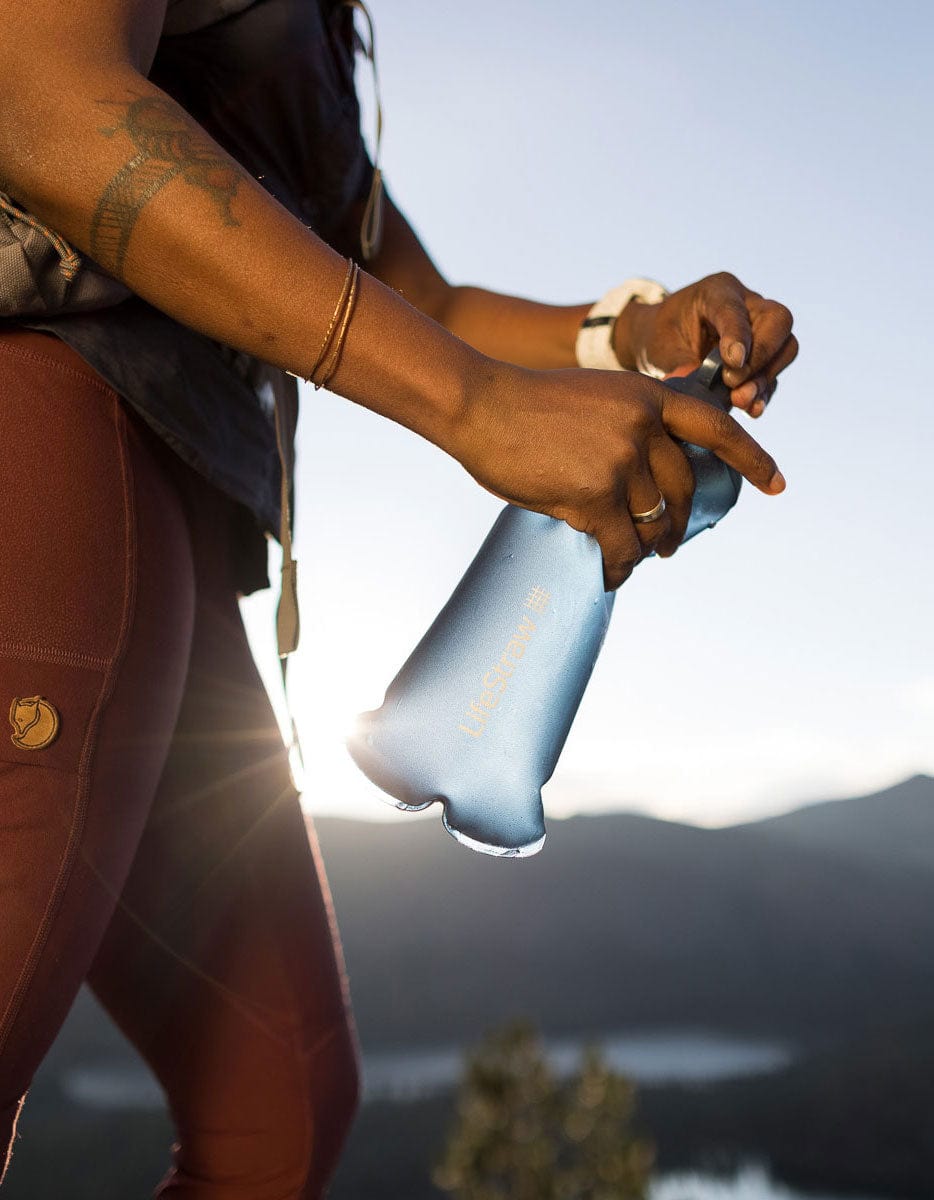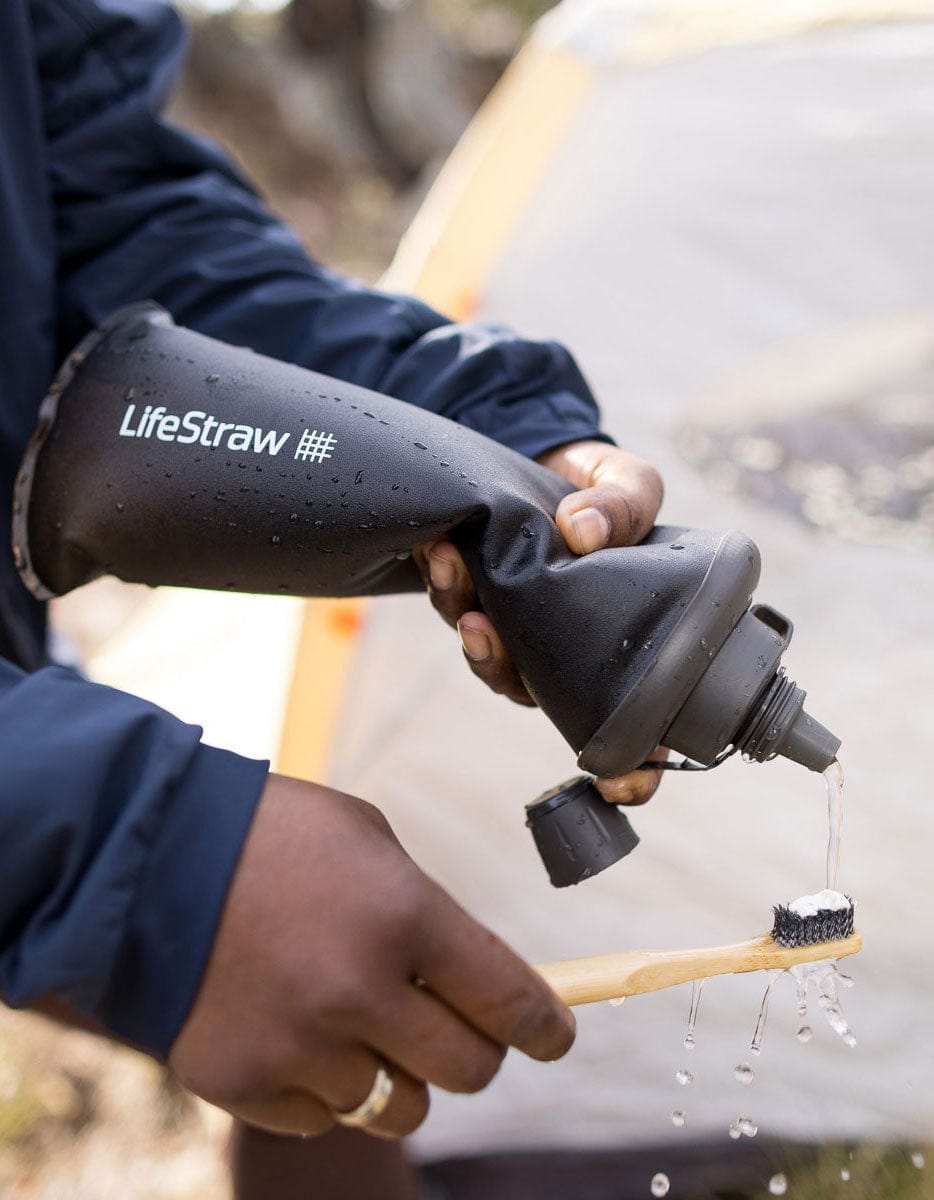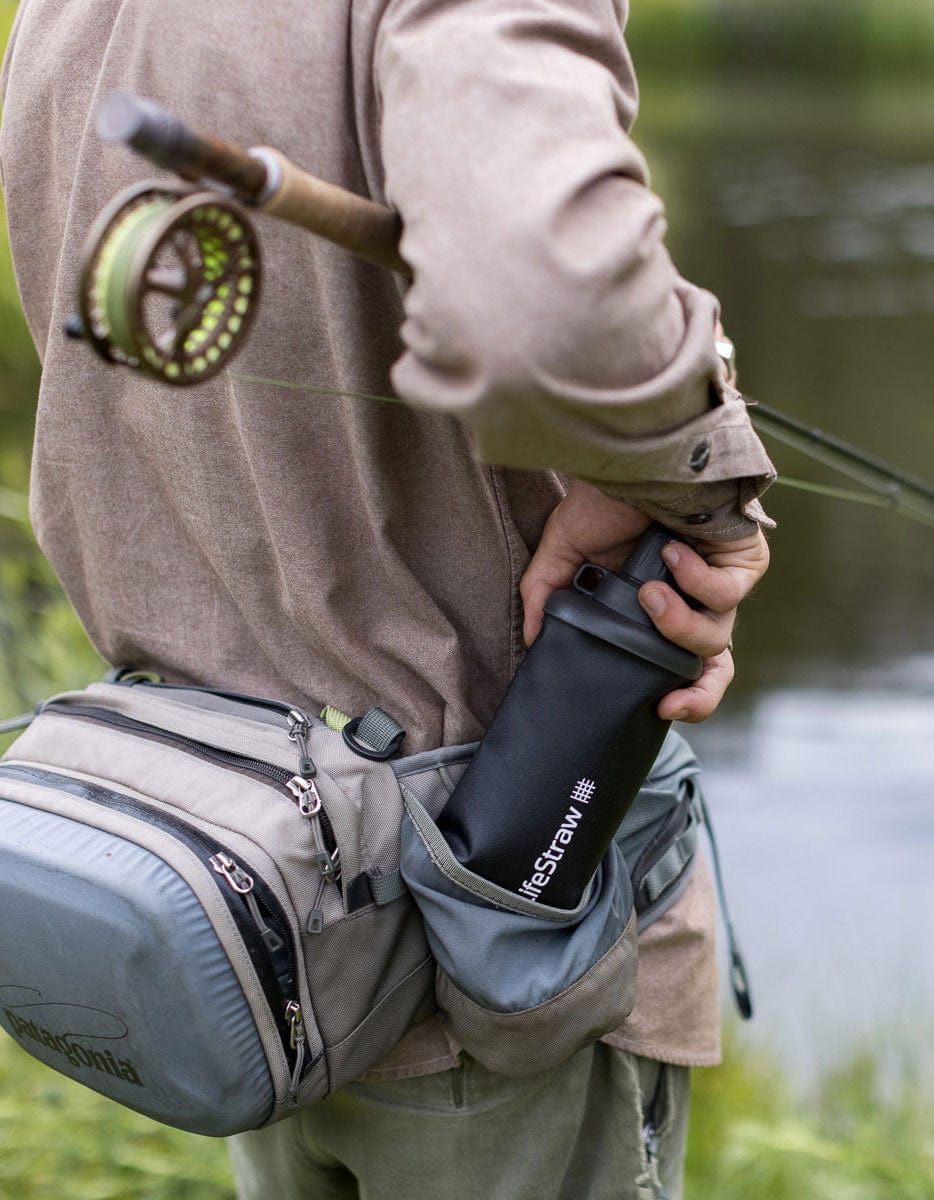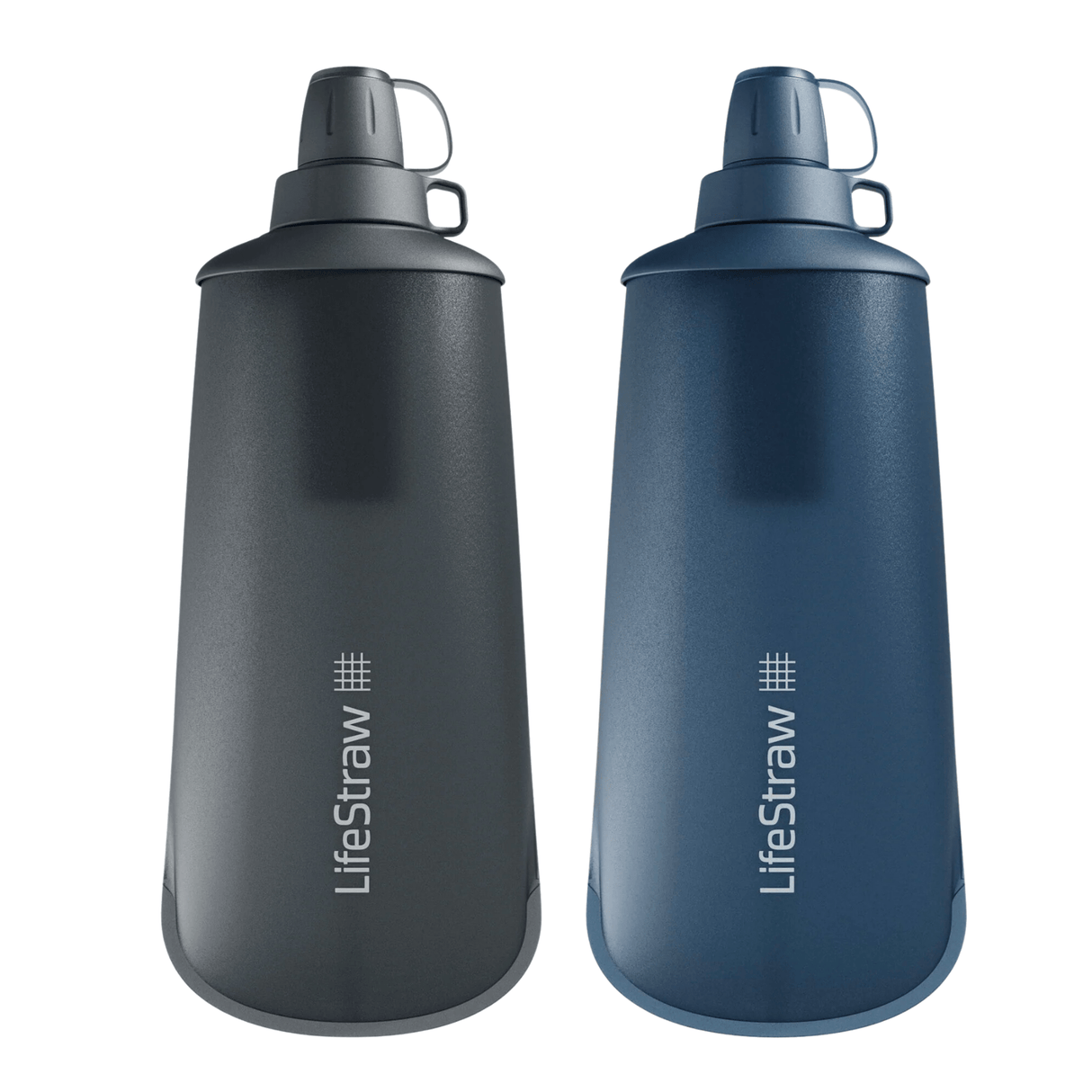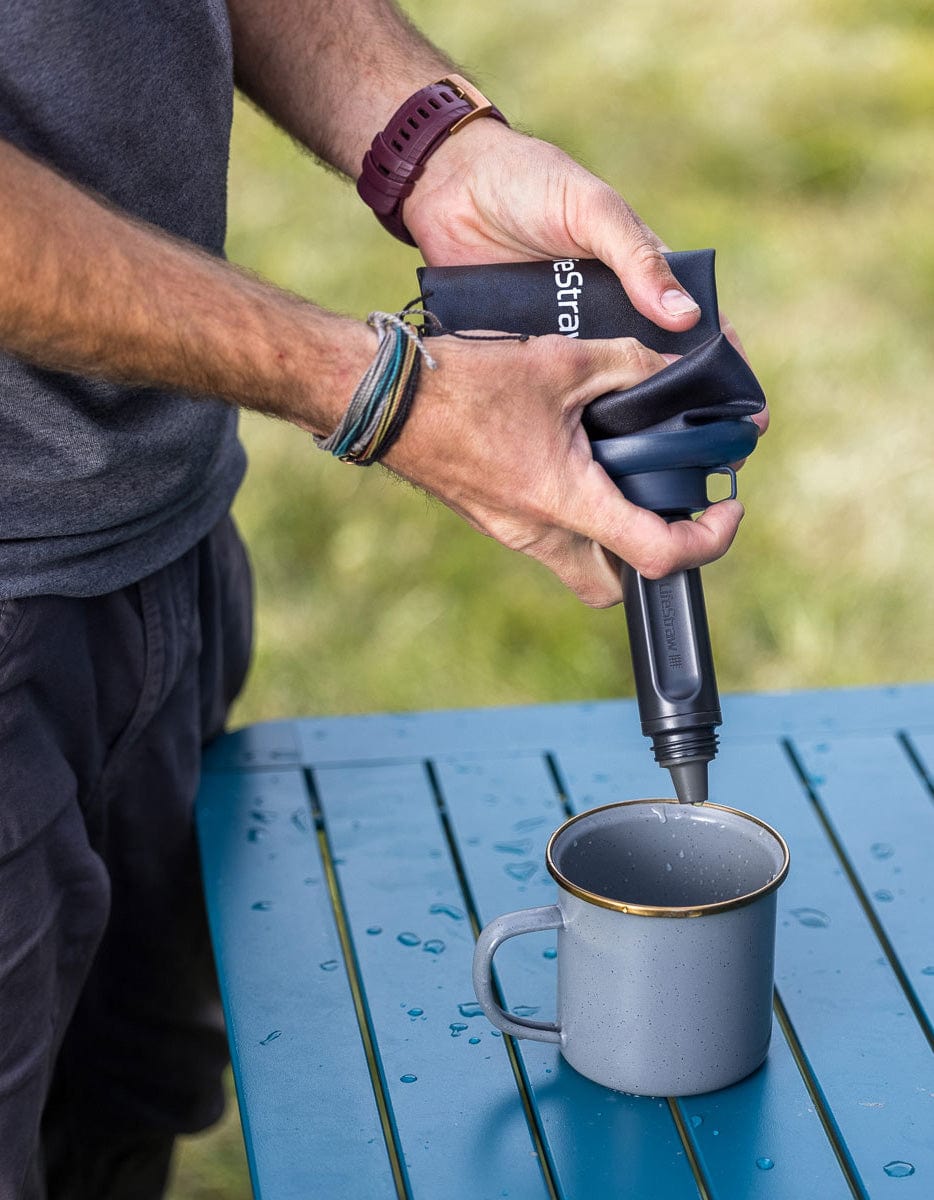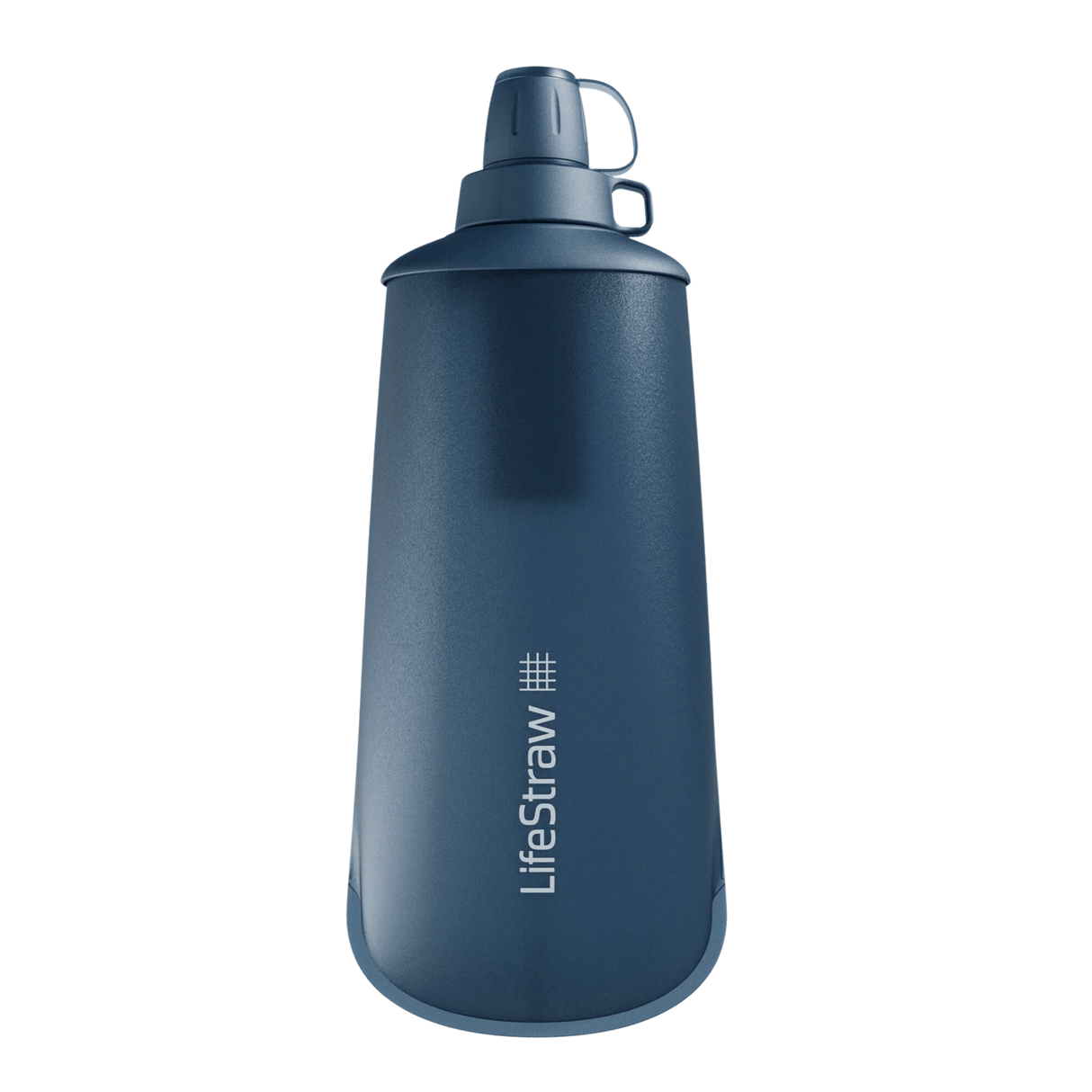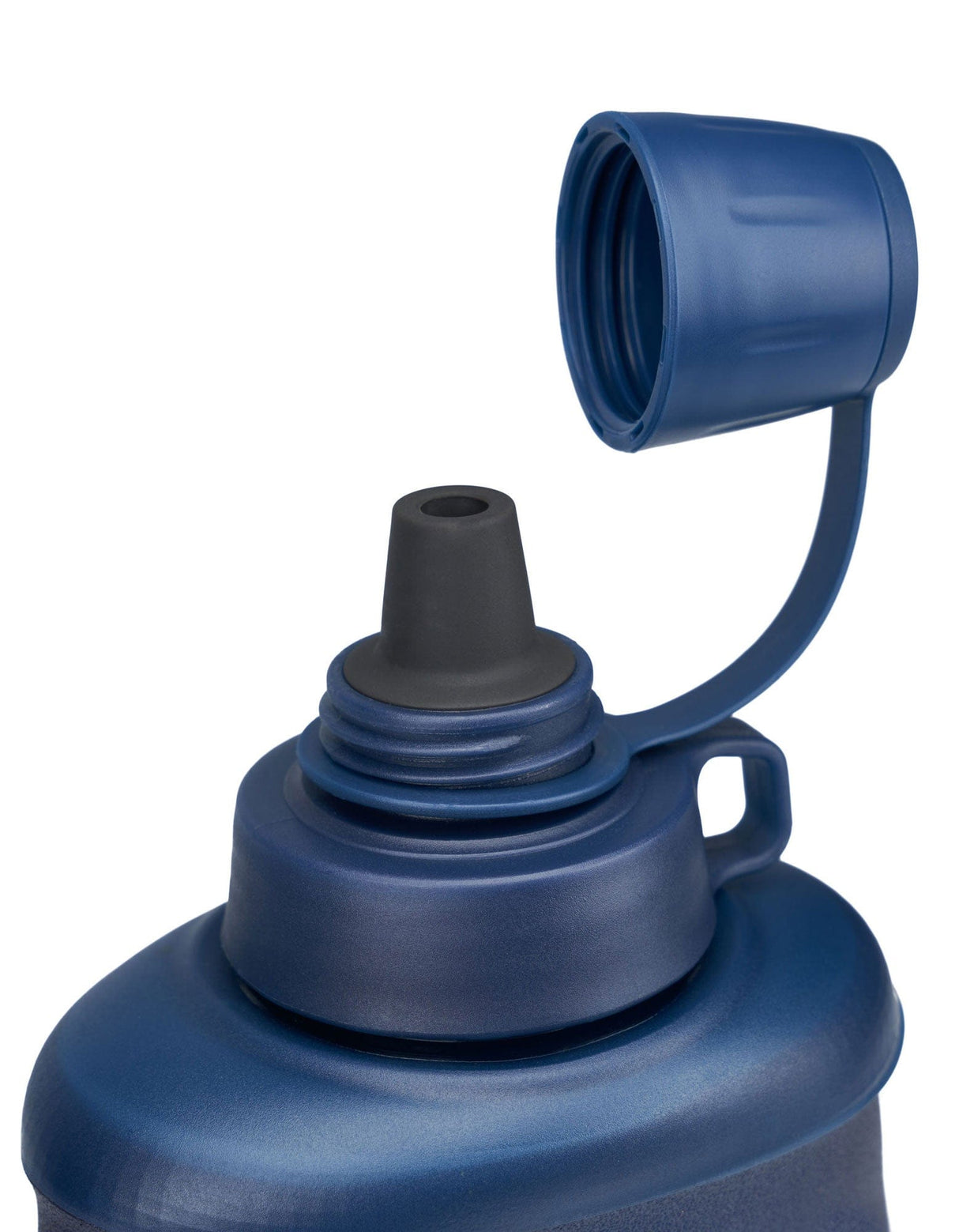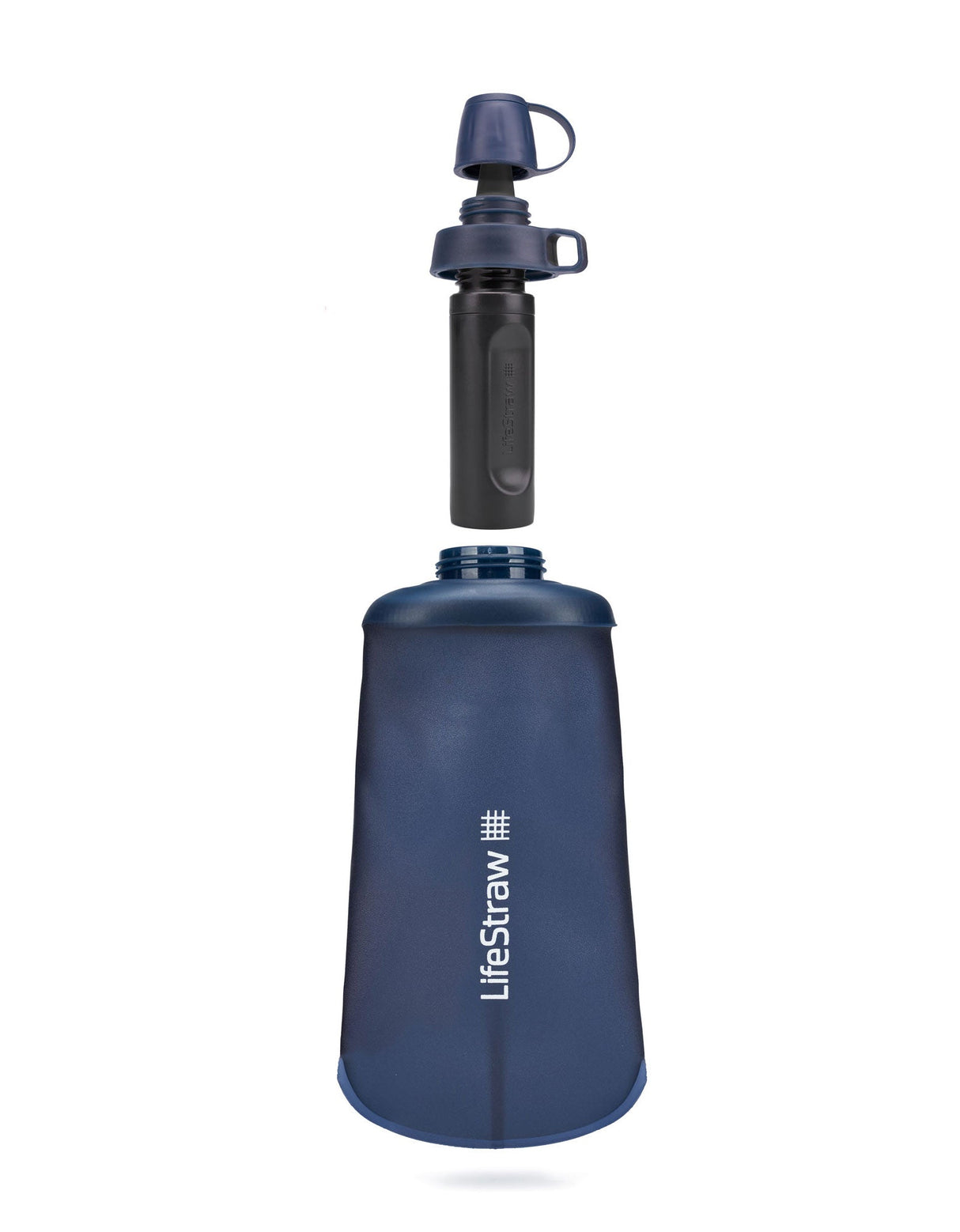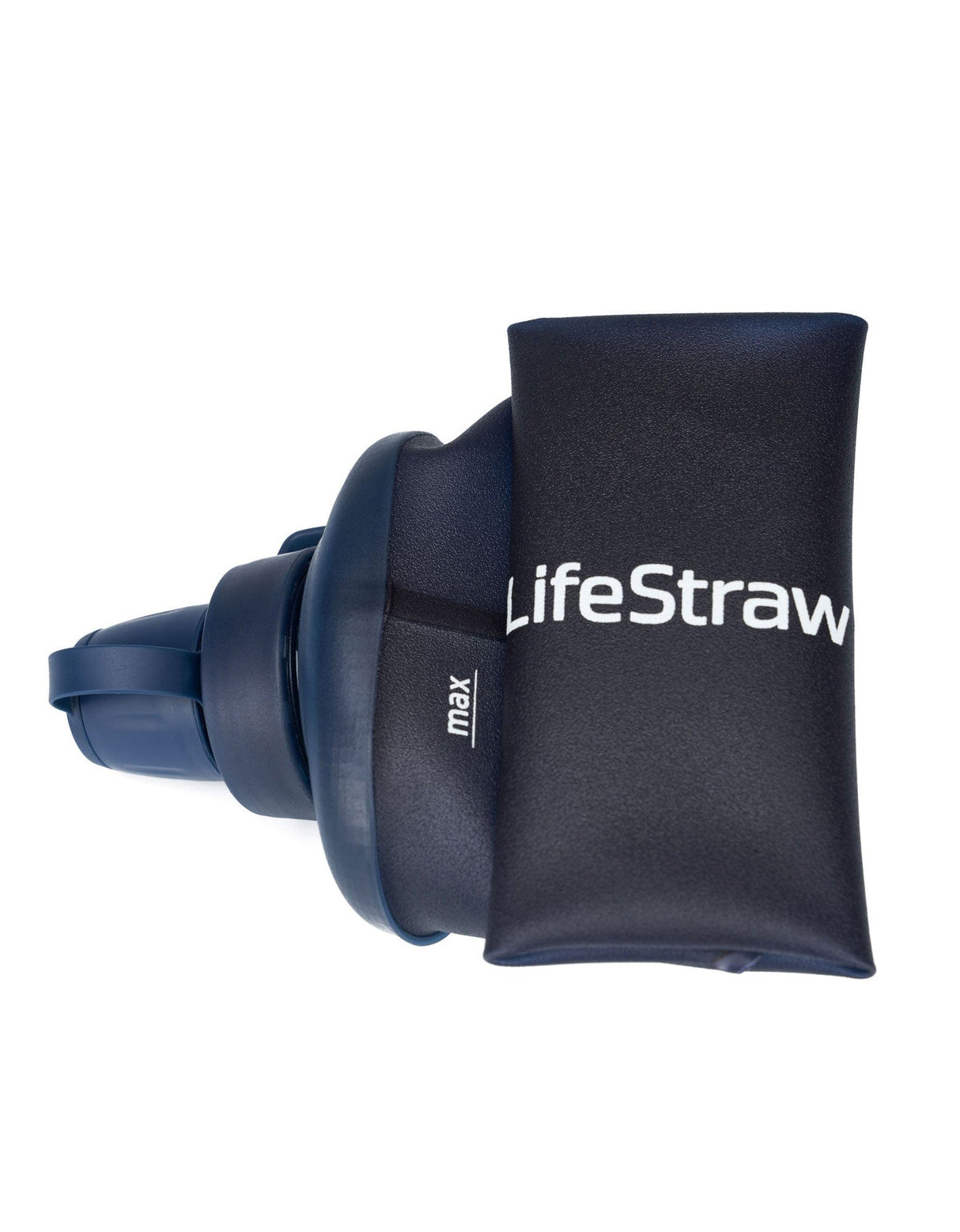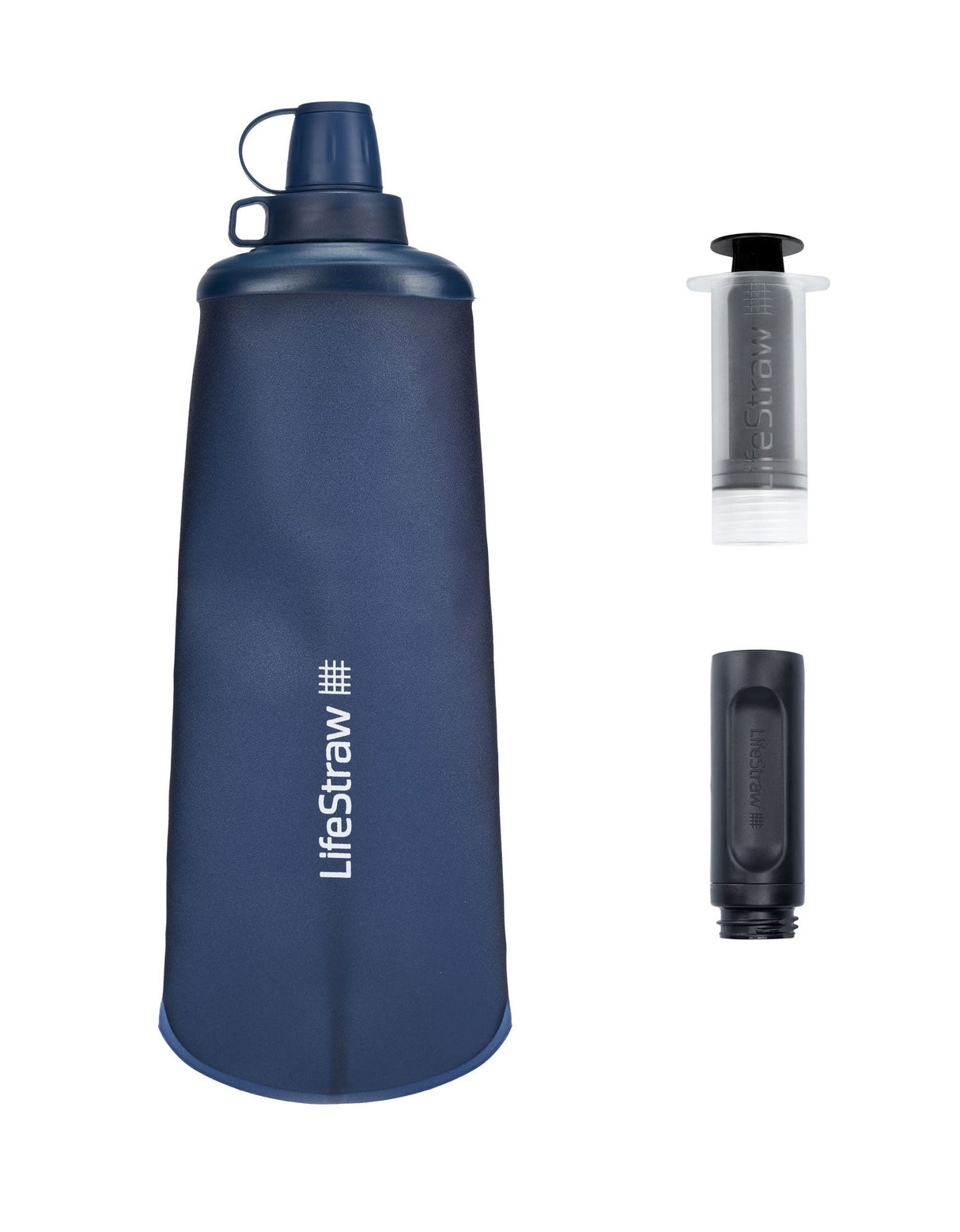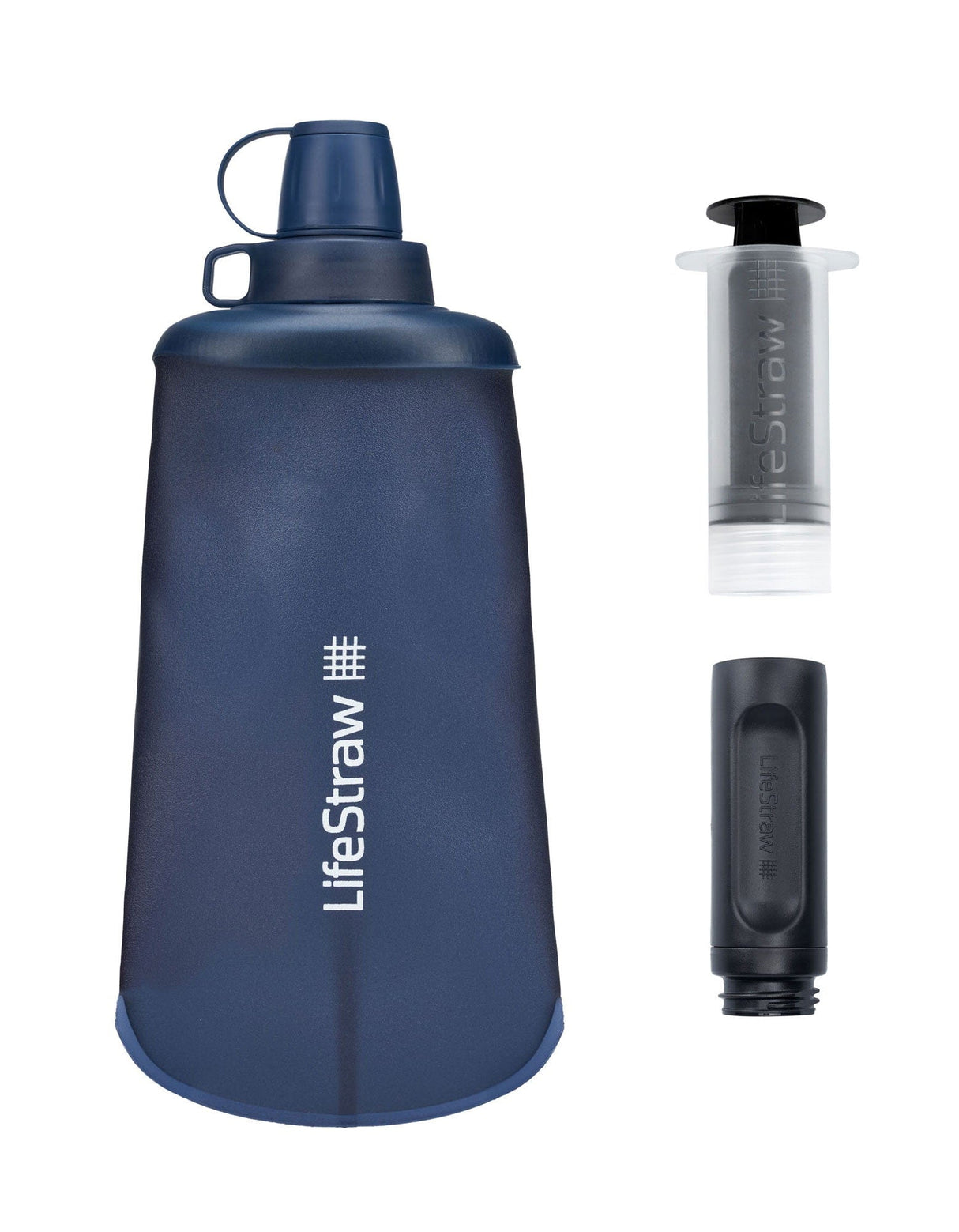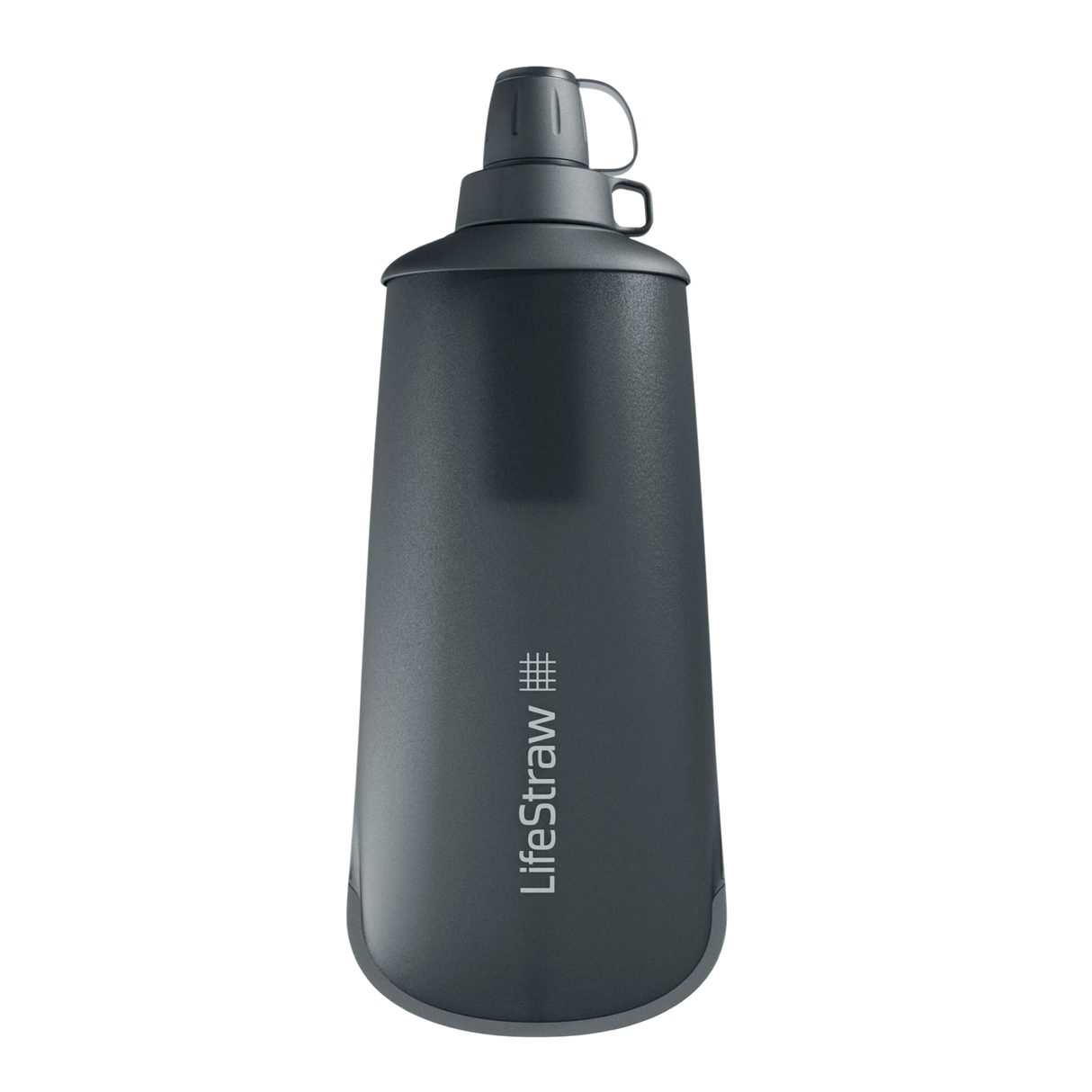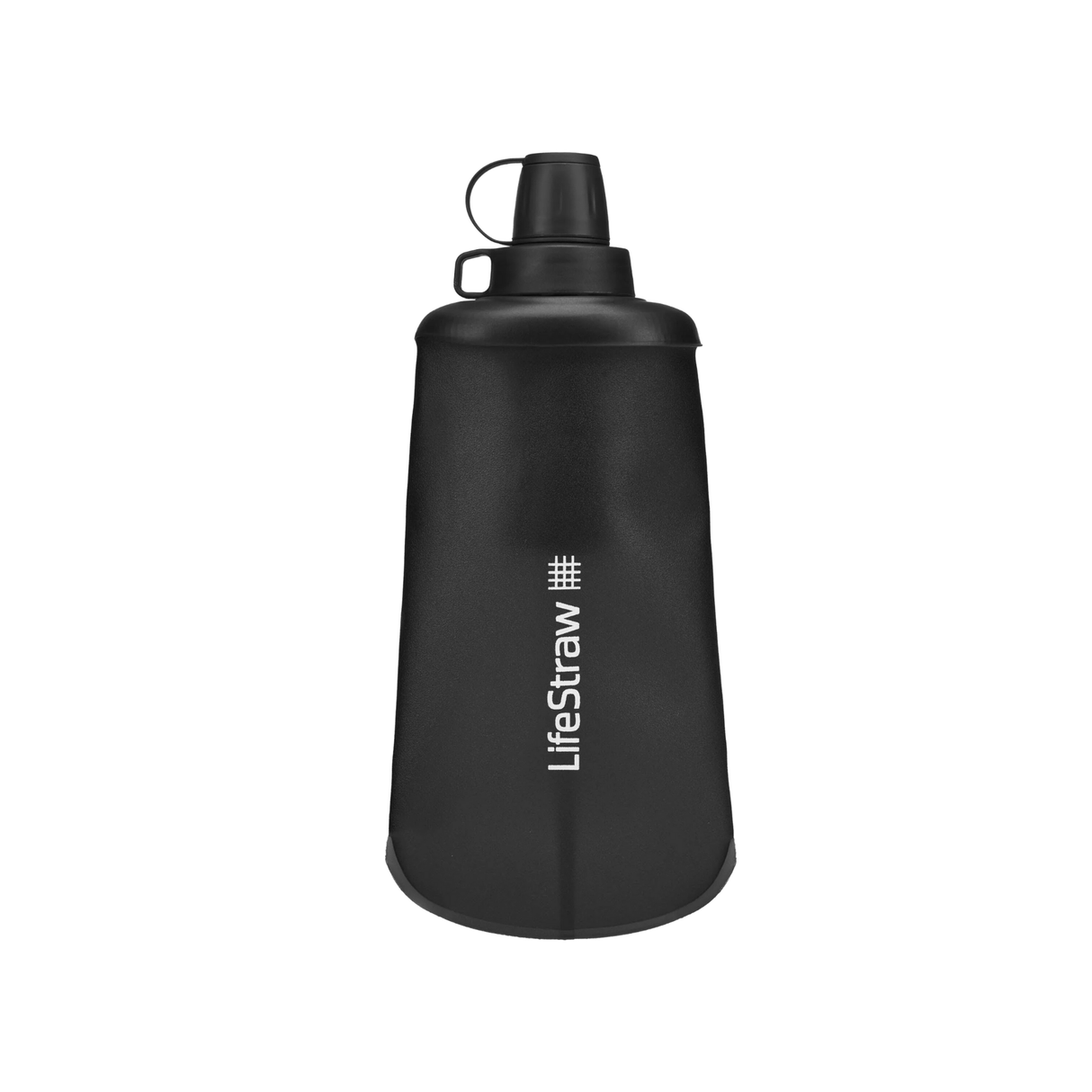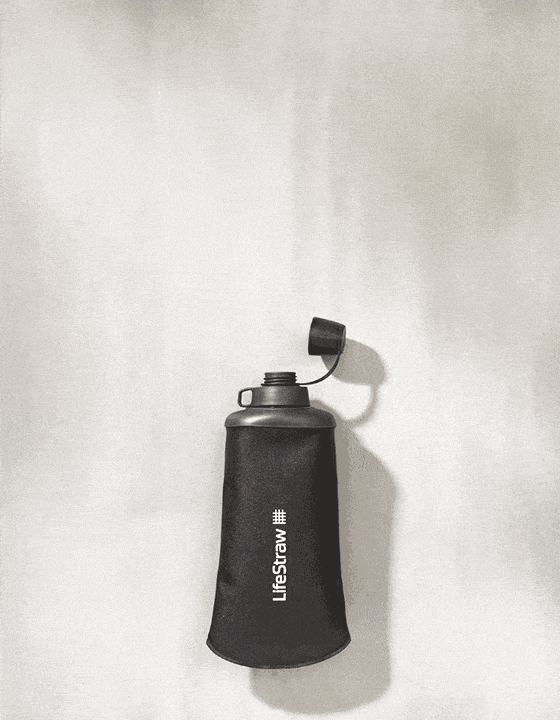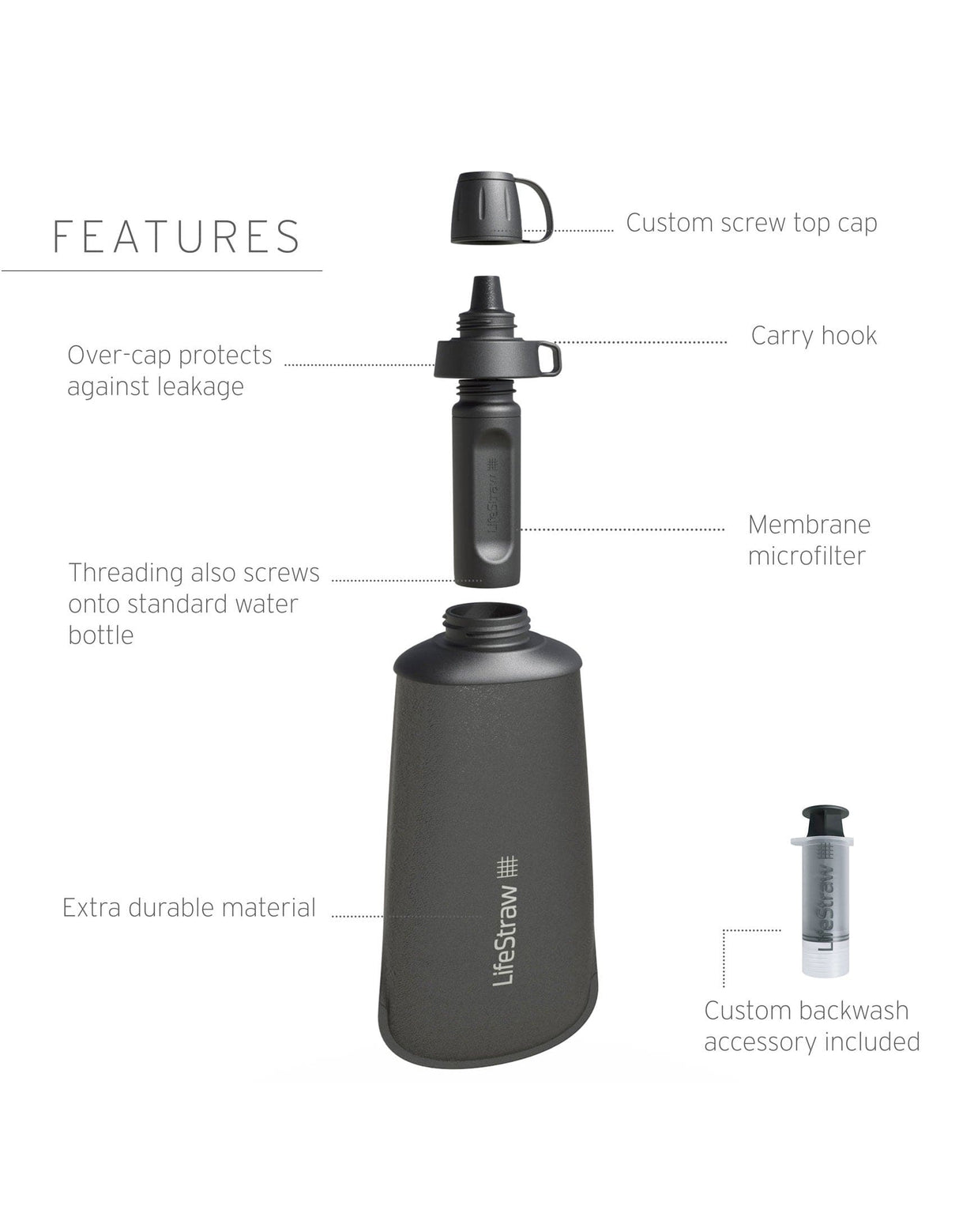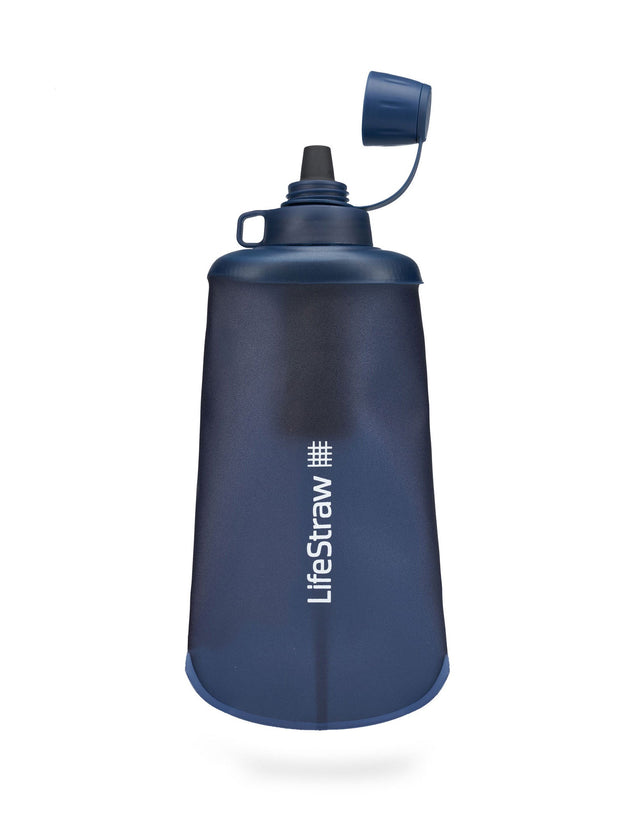Peak Squeeze Collapsible Bottle (with Peak Series Filter)

own it from $10/wk
Description
Description
It's time to stop carrying around a bag of plastic parts and multiple water bottles. LifeStraw’s Peak compact squeeze filtration is an all-in-one water storage and filtration device. Made from premium materials, it’s durable enough to last you on your long-haul adventures without having to worry about rips, tears, and punctures. Ultralight and collapsible at less than 4 ounces, you can grab and go, using as a straw filter, storage solution, squeeze system or connecting to other Peak Series systems to best fit your adventure. The filter membrane density has been optimized for flow rate and the over-cap features and smart seal mouthpiece prevent leakage.
- Robust carrying feature makes it easy to connect to your pack with a carabiner or rope
- Enhanced microfilter performance: Our re-engineered membrane and custom backwash accessory means better performance against sand and silt, maintaining great flow over the long haul
Specifications
Specifications
-
Dimensions
-
Weight
-
Length
-
Height
-
Width

